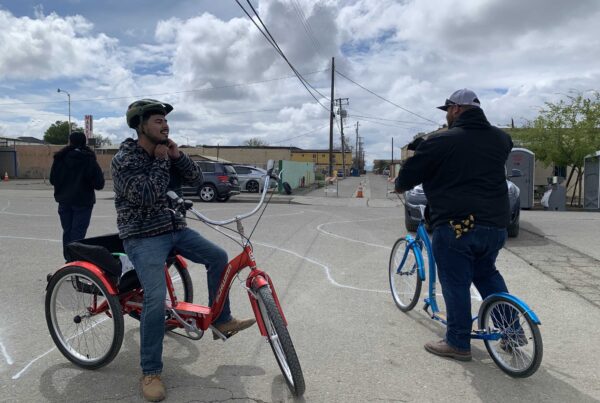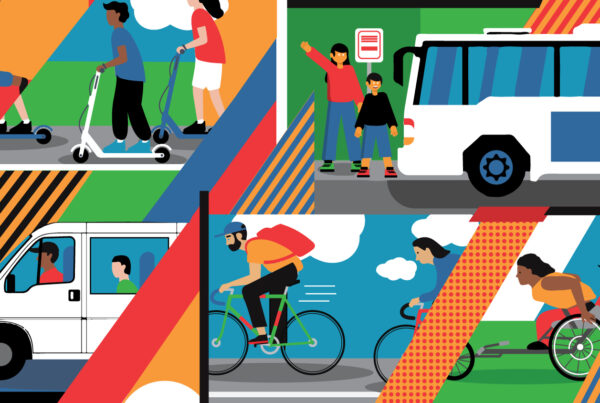One-way carsharing provider car2go, a subsidiary of Daimler AG, is the largest carsharing company in the world, with 1.4 million members sharing more than 14,000 vehicles throughout Europe and North America. The company also recently launched service in China’s Chongquing municipality, its first Asian market. Michael Mikos, car2go’s chief financial officer and director of strategic development, oversees all car2go system launches in North America. He also manages the integration of new Daimler mobility products, as well as strategic partnerships, and investments in the North American mobility market.
The following is a lightly edited version of the Shared-Use Mobility Center’s conversation with Mr. Mikos.
What are some of the latest trends you’re seeing in one-way carsharing?
More automakers are following Daimler’s lead and starting to think about themselves as comprehensive mobility companies, including carsharing. However, we believe car2go’s flexible one-way carsharing model is the most convenient and appealing for people looking to get from point A to point B. One-way carsharing is particularly difficult to do successfully. We’re proud to be the leaders, and I think that car2go’s model will continue to work best for the foreseeable future; a future that also includes autonomous vehicles. Self-driving cars will unlock a whole new level of potential for car2go and mobility in general. In the interim, innovation in this space will be driven by optimization – the ability to most effectively predict demand for vehicles and locate them accordingly, so our members have access to cars where and when they need them.
How does car2go’s model fit with autonomous vehicles?
Autonomous vehicles will add even more convenience and flexibility to the one-way model. An autonomous car2go car would come to you when you need it, drop you off when you get to your destination, and then move on to pick up the next member. Unlike today, you won’t need to park the car. And for members who would rather read, catch up on email or nap instead of drive – they’ll be able to do all that and more in an autonomous car2go.
How do you see one-way carsharing corresponding with other modes?
We are seeing cities really embrace shared mobility and becoming much more multimodal. It’s so much different than it was even 24 months ago. I think everyone is starting to understand the benefits of having a diverse urban transportation mix. While a city may be adding carshare cars today, they will see a net reduction in vehicles tomorrow once everything gets up and running. Carsharing encourages more people to share fewer cars overall.
We also know that one-way carsharing supports public transit. We’ve heard from many of our members that car2go gave them the confidence to be able to commit to using transit instead of buying a personal vehicle. They know that, if their plans change or if they miss a bus or train, they still have car2go to affordably get them where they need to go. Having options is very important. It’s hard to get people to give up their car if they don’t believe they have real alternatives. One or even two modes doesn’t necessarily give you enough of a sense of security to make that leap. It takes a true multimodal network to get people to look past personal vehicle ownership.
It seems like car2go has been adjusting its home service area in various markets recently. Could you share some insights on what you’re learning about how and where one-way works best?
We’re the first company to run a one-way carsharing operation of this scale throughout the U.S. and Canada, so we’ve naturally had to learn and adjust along the way. One of the things we’ve been experimenting with is Home Area size. We found that, in many cases, our Home Areas were simply too large. We saw that some of our vehicles ended up in areas with significantly lower demand, and those vehicles tended to stay there and take up a parking space instead of helping move people around. By adjusting the boundaries of the Home Area, we improved availability of our vehicles where members need them most, and ensured cars remained in constant circulation. Having said that, we would certainly expand the Home Area to include those neighborhoods in the future to address increased density and demand.
How do you work with cities, and what can they do to better encourage growth in carsharing?
A lot of the work we do with cities is educational. Many cities are grappling with some form of the same density and congestion issues. The problem is that their population is outgrowing existing street space and parking infrastructure. We provide city leaders with data that advocates for a multimodal transit landscape. The data is very clear: shared mobility is a truly compelling option that can help tackle congestion challenges and boost quality of life in urban cores.
How do you reconcile carsharing’s impacts on reducing vehicle ownership with the fact that car2go is a subsidiary of Daimler?
Daimler is a mobility company that recognized the value of providing people with high-quality mobility options like carsharing very early on. Personal vehicle ownership is still important, especially in suburban and rural areas. Additionally, many of our members also own a personal vehicle and for them a car2go makes for an ideal second car.
What are your hobbies outside of work?
Movies, concerts and my children’s sporting events. My favorite place to see concerts is still back in Chicago, where I grew up.



